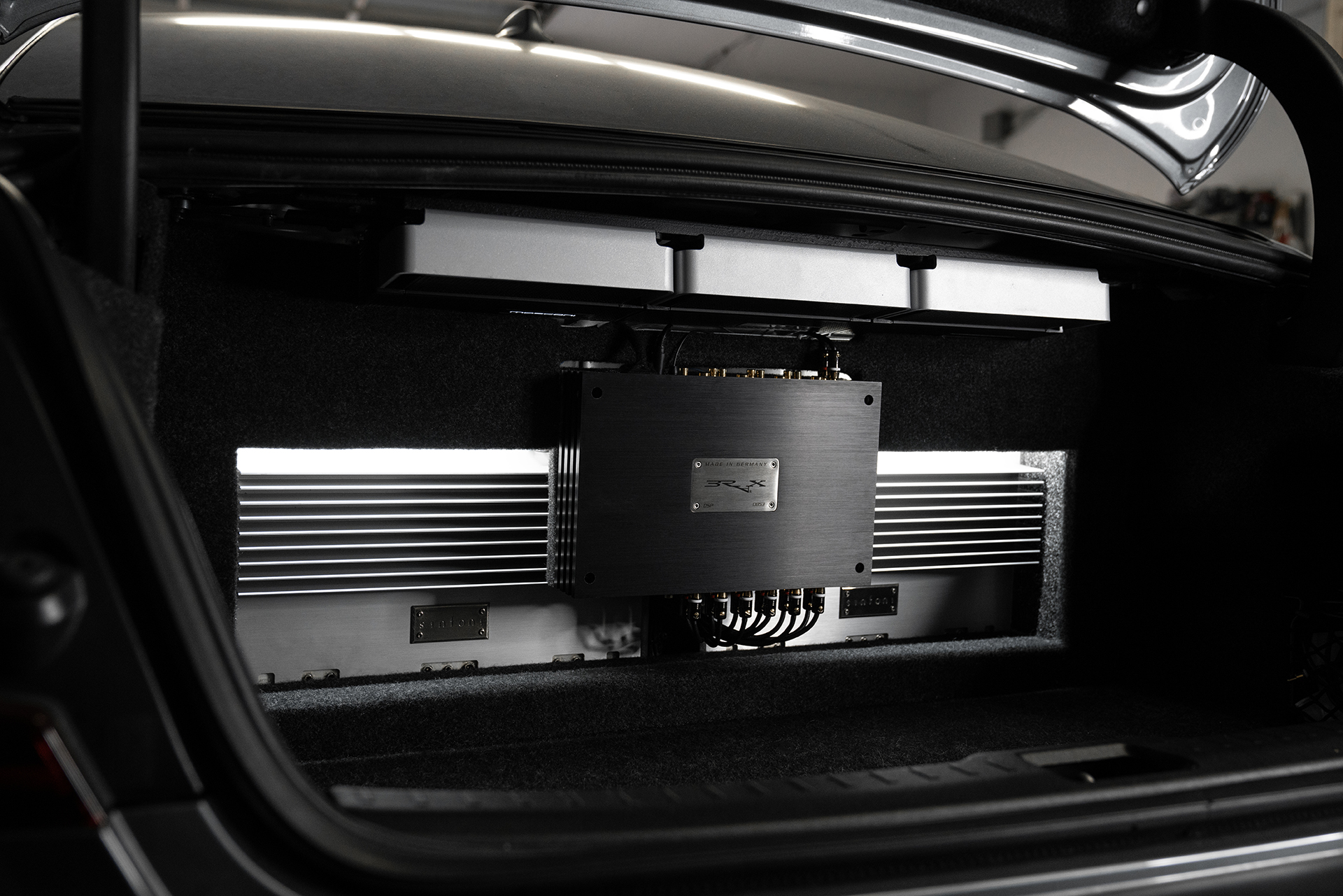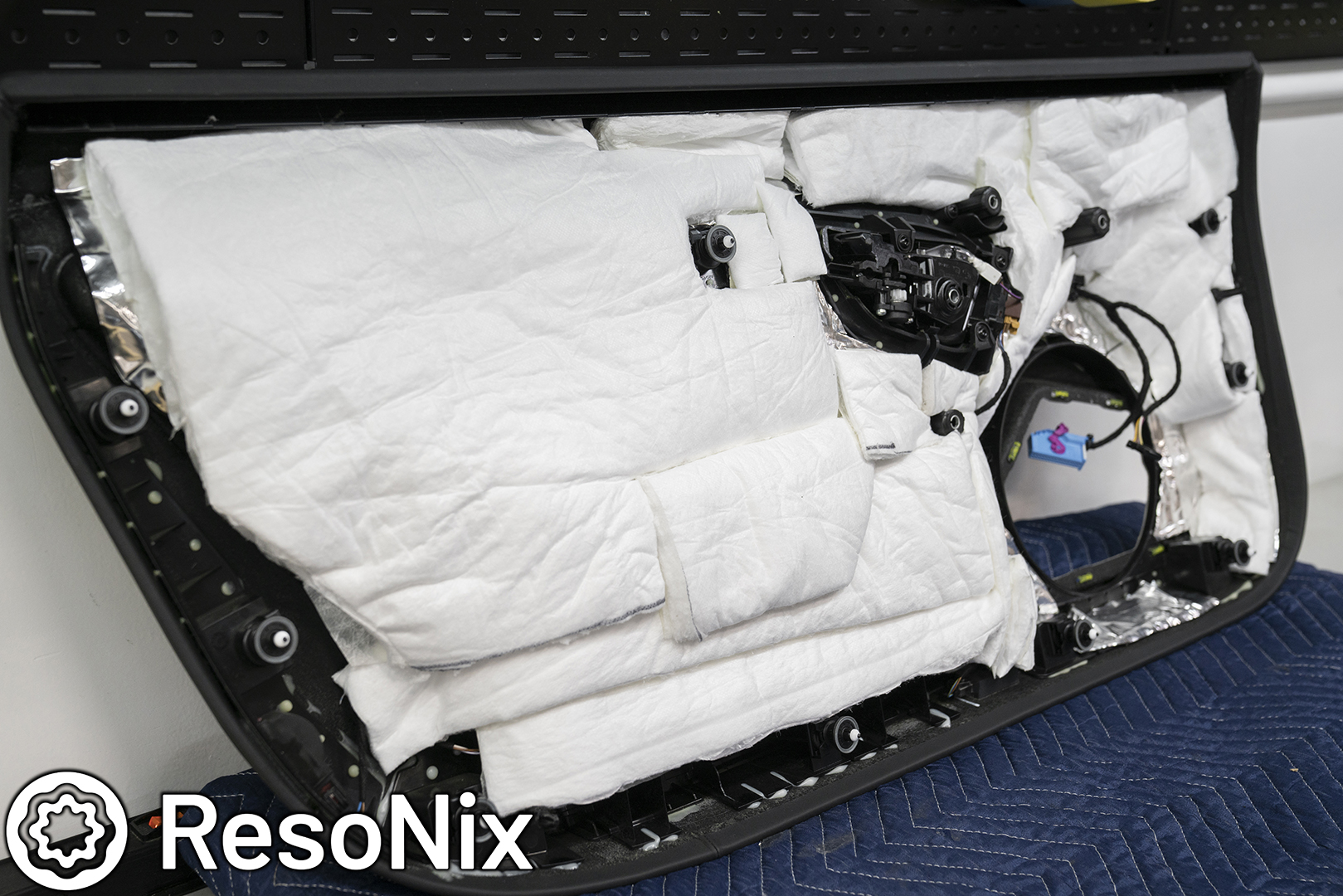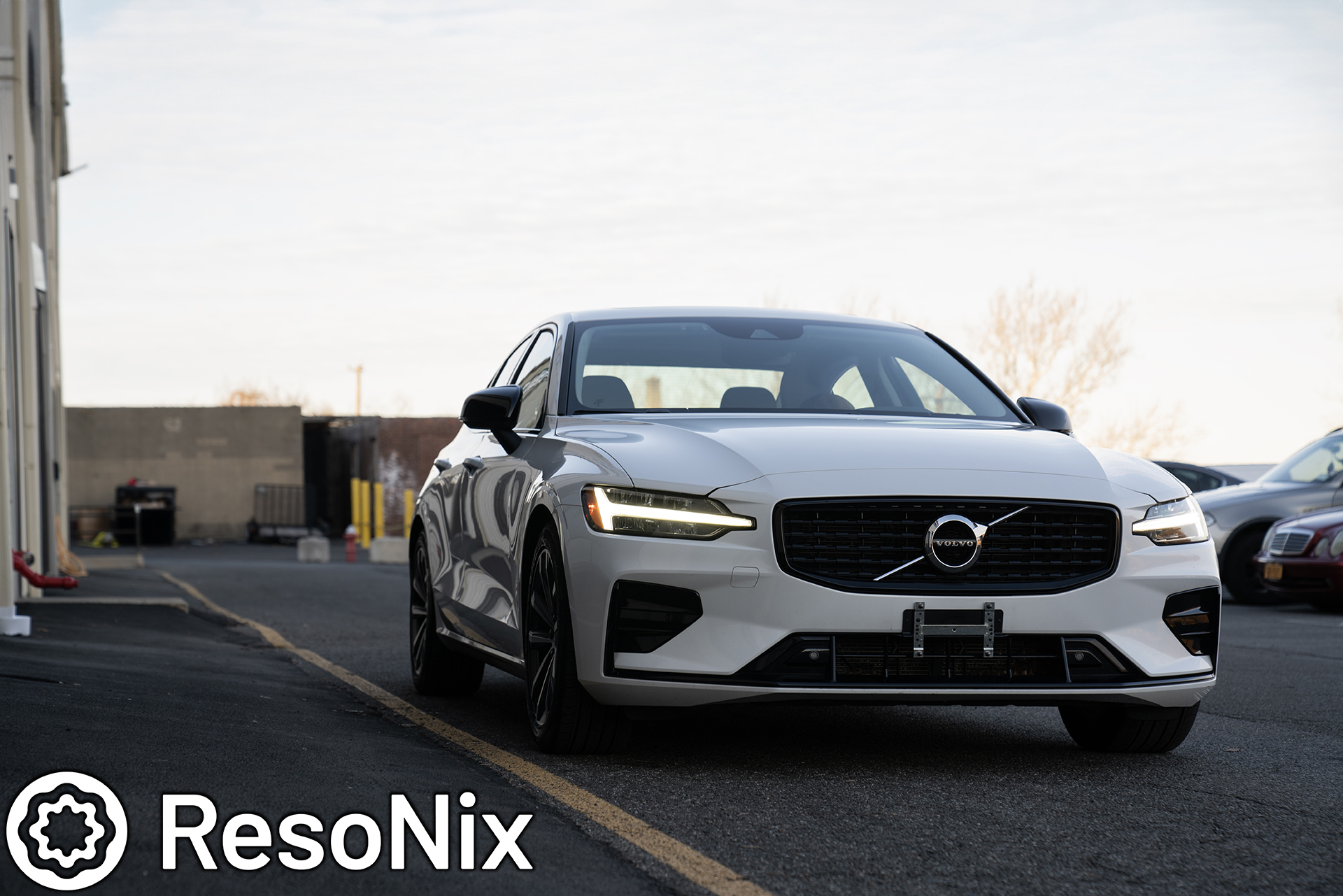
2019 Volvo S60 R-Design – ResoNix Sound Solutions Demo Vehicle Car Audio Installation
2019 Volvo S60 R-Design – ResoNix Sound Solutions Demo Sound System Elevating Sound and Functionality: The Ultimate 2019 Volvo S60

In the world of cars and cruising, there’s a hot topic making the rounds: “What is the best sound absorber for cars?” It’s like the secret sauce for turning your vehicle into a peaceful haven. You see, we often get caught up in the horsepower, banging tunes, and plush seats, but there’s one unsung hero we tend to forget – sound absorbers. These unsung champs have a knack for hushing up the noise inside your ride, making it comfier and quieter. So, hop in as we take a spin through the realm of sound absorbers and figure out which ones are the absolute best for your car. Whether you’re a die-hard music enthusiast, a daily commuter yearning for some peace, or just someone who craves a noise-free journey, we’ve got your back. Let’s roll and discover the key to making your drive smoother and more enjoyable.
So, there are many different types of sound absorbers out there. They can essentially be split into two different categories. One being Porous sound absorbers, and the other being Fibrous sound absorbers.
A porous, open-cell foam sound absorber is a specialized material used to reduce and dampen sound within an environment. It is characterized by its porous structure, which allows sound waves to enter and be absorbed rather than reflected. This absorption occurs as sound energy penetrates the open-cell foam and is converted into heat through friction and air movement within the material. Open-cell foam sound absorbers are commonly used in various applications, such as acoustic panels and home theater rooms, to improve sound quality and reduce noise levels. Their versatility and low cost make them a popular choice for creating quieter and more acoustically controlled spaces. While there are some options for porous sound absorbers for cars, the options are slimmer than one would think.
A fibrous sound absorber is a material designed to reduce sound via absorption within a given space. It is typically composed of fibrous materials that also capture and dissipate sound waves through friction, and airflow resistance. These materials are known for their ability to transform sound energy into both thermal and mechanical energy within their structure, effectively minimizing noise levels. Fibrous sound absorbers find applications in various settings, including soundproofing walls, acoustic panels, and most importantly automotive insulation, where they enhance sound quality and create quieter environments. Their versatility and efficiency make them a valuable tool in improving acoustic performance and reducing unwanted noise. For sound absorption in a car, or even camper vans, and even mass transit vehicles, these have recently progressed from the old recycled fabric jute products of the 90’s.
Well, which sound absorber material you should use will depend on your goals, application, and budget. There are pro’s and cons to each type, do’s and dont’s for each type, and intricacies all around. Following, we will do our best to explain each and every type that is applicable for sound absorption in an automotive environment. Below, we will dive into three of the main options to use as sound absorbers in a car, or any other vehicle for that matter.
The standard sound absorber that you will find when searching for “sound absorber” on Google or Amazon is going to be a Polyurethane-based open-cell foam. Sometimes they come in “egg-crate” shape, or wedges, or pyramids, etc. But they’re almost all basic polyurethane open-cell foam. The reason why it is so popular is very simple. Price. It is extremely cheap to manufacture and is very abundant. For sound absorption, it is a pretty decent performer, especially considering its low cost. However, there are a couple of major issues with polyurethane-based acoustic absorption foam when it comes to automotive sound absorbers and the environment they will be subject to. Polyurethane Open-Cell Foam will soak up and hold onto water and moisture like a sponge, and it is not very durable in the long term. It will break down from UV rays, moisture, and just falls apart over time in general.
The second a sound absorber is saturated with moisture, it stops being able to act as a sound absorber. It also opens up to the can of worms that are mold, mildew, and pre-mature corrosion of your vehicle. So, while it may be a good choice to cheaply sound treat your home recording studio, it has no place in a car.
While standard acoustic foam isn’t a good or reliable option as a sound absorber for cars, there are still foam-based options out there for automotive sound absorption use. Hydrophobic Melamine Foam is the most common in the aftermarket for a variety of reasons. Not only is its acoustic absorption performance better than the standard polyurethane acoustic foam, but it is also fully water resistant throughout its entire volume. This means that the water and moisture that it will inevitably come into contact with in a vehicle will have no chance of being absorbed, so there is no worry of mold, mildew, premature corrosion, or acoustic absorption performance reduction due to saturation. Considering the automotive environment, these cautions are extremely important to consider when using a porous material as a sound absorber in a car.
That’s not where the benefits end. It also has incredible thermal insulation properties and is highly resistant to heat. Hydrophobic Melamine Foam can be used not only for sound absorption in applications such as camper van builds, marine applications, and general automotive use, but also act as a great thermal insulator to keep more consistent temperatures in your application. The only downside to Hydrophobic melamine is the cost. It’s just a more expensive material as it is much more difficult to manufacture and fabricate into desired shapes.
Standard Hydrophobic Melamine Foam sheets will soon be offered by ResoNix Sound Solutions, but in the meantime, we currently offer our ResoNix Guardian. ResoNix Guardian is a product that consists of two layers of Hydrophobic Melamine foam that is tailored for acoustic absorption performance and has a layer of 1Lb/Sq.Ft. Mass Loaded Vinyl sandwiched in between. This product takes acoustic absorption and adds the benefit of a noise barrier for noise-blocking properties as well. Our Reference Information & Guide page will be able to shed light on the differences between sound absorption and noise blocking.
ResoNix Guardian is a top-of-the-line sound absorber for door-mounted midbass speakers, inside marine, industrial, and commercial equipment rooms, boat engine hatches, and many other applications where you need an extremely resilient and high-performance sound absorber and/or thermal insulator.
ResoNix Sound Solutions is currently the only company offering an OEM-rated, automotive-grade fibrous sound absorber. ResoNix Fiber Mat Black Edition is the result of modern materials engineering and is new to the automotive sound absorber game. What makes it different? Well, its entire construction! Instead of being an open cell foam, it is comprised of microscopic melt-blown polypropylene fibers that are assembled in a way to produce the ideal acoustic impedance for sound absorption while also being able to convert sound energy into mechanical and thermal energy via the vibrations of said microscopic fibers for even further sound absorption. Until recently, foam was the best and only real option for sound absorption in a car, but ResoNix Fiber Mat has been able to smash through previous sound absorption standards by the previous standard products.
Not only is ResoNix Fiber Mat the best sound absorber per given thickness, but it is also hydrophobic and will not grow mold or mildew, it can withstand very high temperatures, cuts very easily, and can fit into many locations in vehicles, and is also versatile enough for plenty of commercial and industrial applications.
Currently, ResoNix Fiber Mat is the best sound absorber per given thickness on the market, and is also one of the most price-friendly as well. ResoNix Fiber Mat is best used on door panels, rear decks, fender liners, headliners,interior quarter panel areas, on the back of pretty much any interior plastic trim you can imagine, and even to fully insulate camper vans, equipment enclosures, and more.
If you have any questions about which sound absorbers are best suited for your specific car, camper van, transportation vehicle, or commercial and industrial use, feel free to contact us anytime. Thanks!

2019 Volvo S60 R-Design – ResoNix Sound Solutions Demo Sound System Elevating Sound and Functionality: The Ultimate 2019 Volvo S60

Elevating the Volvo S60 Experience: A nearly completely hidden sound system upgrade with one extra goal; to keep it OEM

ResoNix Sound Solutions is a company with a specialty in high-end car audio and automotive sound treatment that offers top quality products and services that provide superior performance in their respective categories. No gimmicks, no baseless claims, no nonsense. Constrained layer dampers, sound absorbers, decouplers, noise barriers, and car audio DSP tuning and consultation services are part of our line-up with a focus on data-backed, solutions-based products developed by professional enthusiasts, for enthusiasts.
